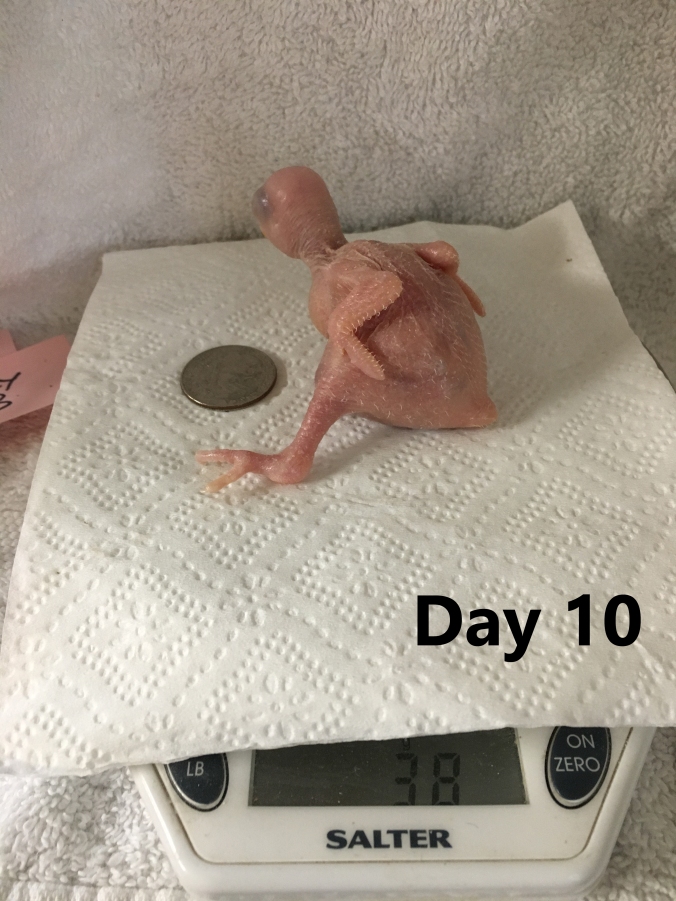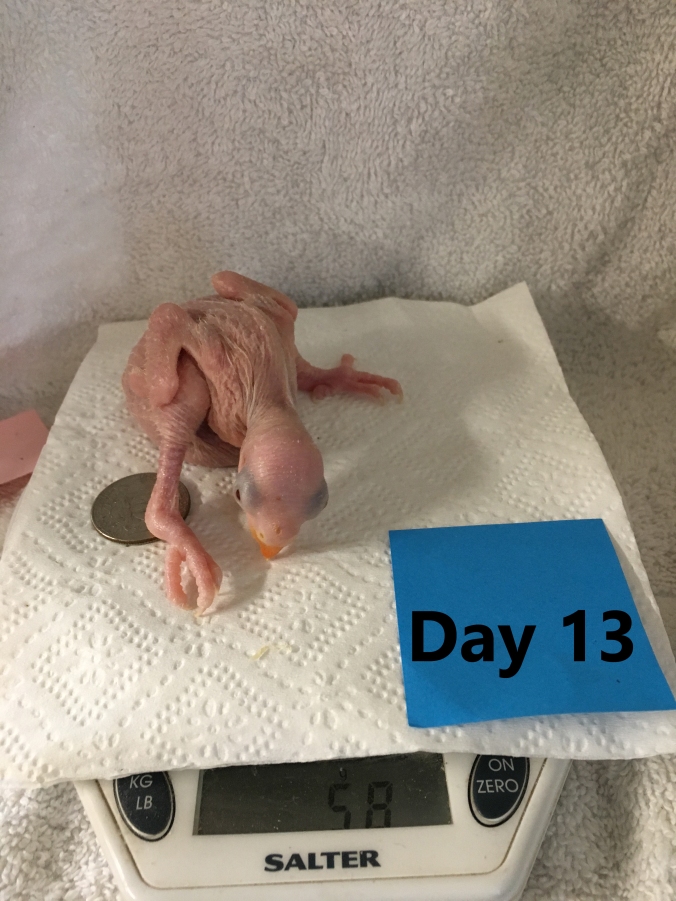Keep in mind when viewing the weights that sometimes the crop is full and other times it is empty. This can cause the weight to vary.

























© 2018 by Karen Trinkaus. May not be reprinted or used in any way without the author’s permission.
Keep in mind when viewing the weights that sometimes the crop is full and other times it is empty. This can cause the weight to vary.

























© 2018 by Karen Trinkaus. May not be reprinted or used in any way without the author’s permission.
The purpose of this guide is to give beginning breeders and general idea of where their chicks should be at a certain age. It is important to notice stunting early so that it can be rectified before the chick falls too far behind.
All images are © 2004 by Karen Trinkaus unless otherwise noted and may not be reprinted or used in any way without the author’s permission.
Day 1
Chick doesn’t do much. It can’t hold it’s head up. Not a very strong feeding response. Down moist.
Day 2
Has figured out where the food comes from. Stronger response. Can sit and hold head up fairly well. Down dry and fluffy.
Day 3
Eyes may just begin to open.
Day 4
Eyes opening.
Day 5
Eyes opening.
Day 6
Feather tracts should be getting more apparent. Chick begins to do defense display (hissing and swaying) when woken up or when the container is moved.
Day 7
Band baby. Feather tracts beginning to bud with tiny pinfeathers
Week 2 (Days 8 – 14)
Pinfeathers grow in. Chicks get better balance, start stretching, standing up and flapping their wings.
Week 3 (Days 15 – 21)
Pinfeathers open, tail and primaries (flight feathers) first. Chicks flap their wings and preen a lot. They also begin picking at things around them (you may want to start providing food items to play with now).
Week 4 (Days 22 – 28)
Weaning is well on its way. Chicks will begin flying all over the place. It’s usually good to wait until they have fairly good control at flying before clipping the wings.
© 1997-2016 by Karen Trinkaus. May not be reprinted or used in any way without the author’s permission.